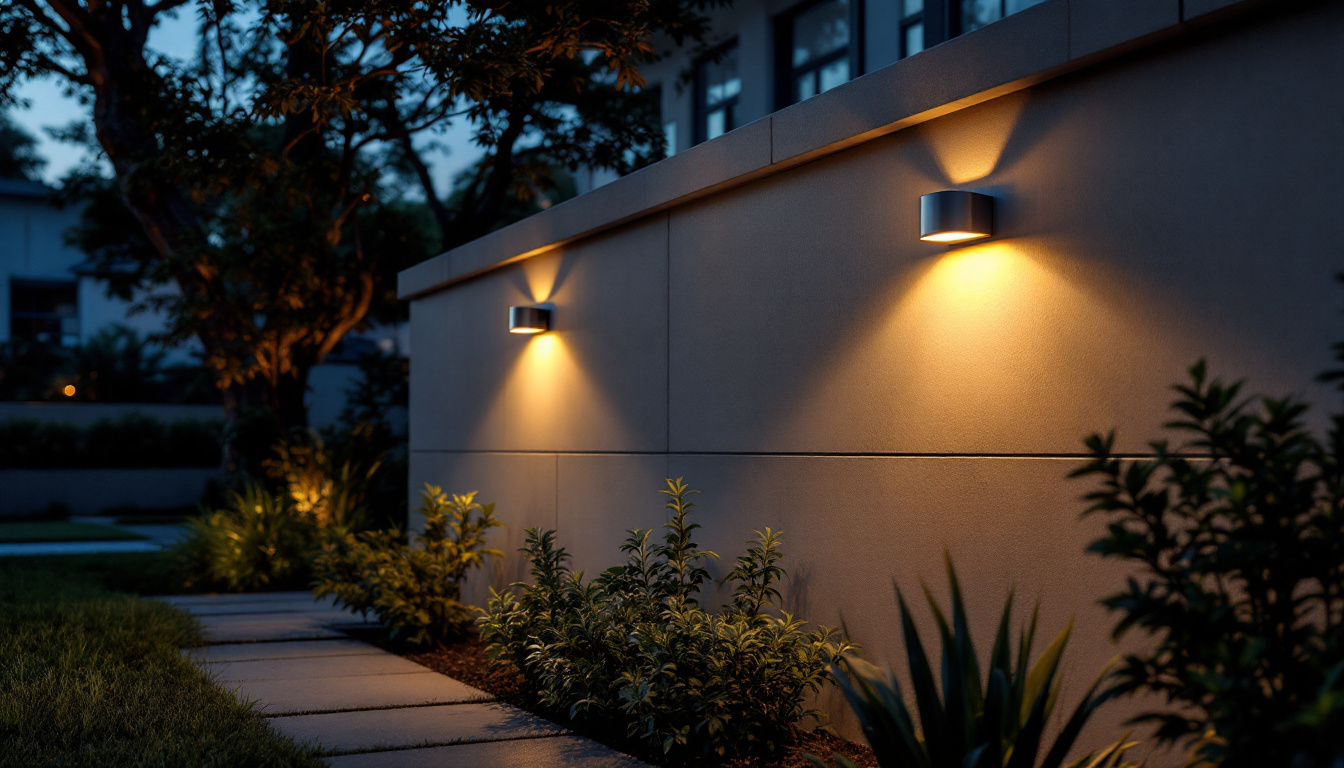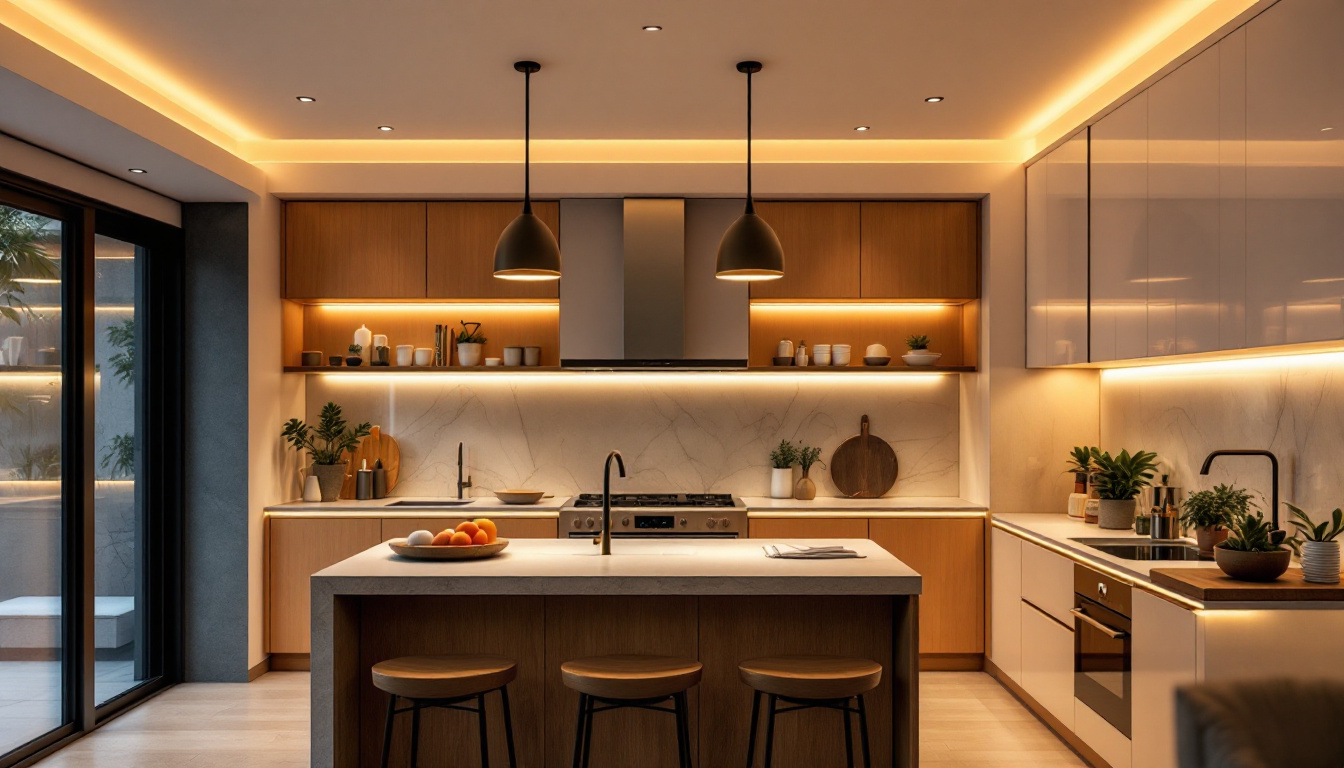

In recent years, the demand for solar outdoor wall lights has surged, driven by a growing emphasis on sustainability and energy efficiency. As a lighting contractor, understanding the nuances of these products can set you apart from competitors and enhance your service offerings. However, navigating the complexities of solar lighting can be challenging, and there are common pitfalls that can undermine the effectiveness of installations.
This guide aims to illuminate the mistakes often made in solar outdoor wall lighting projects and provide actionable insights to ensure successful installations. By avoiding these missteps, contractors can enhance customer satisfaction and improve project outcomes.
Solar outdoor wall lights harness the power of the sun, converting sunlight into electricity through photovoltaic cells. This technology not only reduces reliance on fossil fuels but also significantly lowers electricity bills for homeowners. Furthermore, the installation of solar lights can enhance the aesthetic appeal of outdoor spaces, providing a warm and inviting atmosphere for gatherings or quiet evenings. As energy costs continue to rise, more homeowners are seeking sustainable solutions that offer both functionality and style, making solar outdoor wall lights an attractive option.
However, it is essential to consider factors such as the placement of solar lights, which can greatly affect their performance. For instance, lights installed in shaded areas may not receive adequate sunlight, leading to diminished battery life and insufficient illumination during the night. Additionally, understanding the different types of solar lights available—such as motion-sensor lights, decorative fixtures, and security lights—can help contractors recommend the best solutions tailored to their clients’ specific needs. By staying informed about advancements in solar technology and design trends, contractors can position themselves as knowledgeable experts in the field, ultimately driving more business and fostering long-term client relationships.
Solar lights operate by converting sunlight into electricity through photovoltaic cells. This energy is stored in batteries and used to power LED lights during the night. Understanding this basic principle is crucial for contractors, as it informs decisions regarding placement, battery capacity, and overall design.
Moreover, the efficiency of solar lights can vary significantly based on the quality of the components used. Therefore, it’s essential to select high-quality products that can withstand various weather conditions and provide reliable performance throughout their lifespan. Factors such as the angle of the solar panel, the geographical location, and seasonal variations in sunlight can greatly impact the effectiveness of solar lighting systems. For example, areas with prolonged cloudy weather may require solar lights with larger battery capacities to ensure they remain functional during darker months.
To ensure optimal performance, it is vital to familiarize oneself with the main components of solar wall lights. These typically include the solar panel, LED light, battery, and control circuit. Each component plays a critical role in the overall functionality of the light. For instance, the solar panel’s size and efficiency directly affect how much energy is harvested and stored.
Additionally, the type of battery used can influence how long the lights operate at night. Lithium-ion batteries, for example, often provide better performance compared to traditional lead-acid batteries. Understanding these components allows contractors to make informed decisions when selecting products for their projects. Furthermore, advancements in technology have led to the development of smart solar lights that incorporate sensors and timers, allowing for automated operation based on ambient light levels. This not only enhances energy efficiency but also extends the lifespan of the lighting system by ensuring that the lights are only active when needed. As the market continues to evolve, staying updated on these innovations can give contractors a competitive edge in providing sustainable and efficient lighting solutions.
One of the most critical factors in the effectiveness of solar outdoor wall lights is their placement. Many contractors make the mistake of installing lights in shaded areas, which significantly reduces their efficiency. Solar panels require direct sunlight to charge effectively, and any obstruction can hinder performance.
To avoid this mistake, assess the installation site throughout the day to identify areas that receive ample sunlight. Consider factors such as nearby trees, buildings, and other structures that may cast shadows. proper placement not only enhances performance but also contributes to the aesthetic appeal of the installation.
Different regions experience varying weather conditions that can impact the performance of solar lights. Contractors often overlook the importance of selecting products that are suitable for the local climate. For example, areas with heavy rainfall or snow may require lights with higher waterproof ratings and robust materials to withstand harsh conditions.
Additionally, temperature fluctuations can affect battery performance. In colder climates, batteries may not hold a charge as effectively, leading to shorter operational times. By considering local climate conditions, contractors can choose the right products that will perform reliably year-round.
Battery capacity is a critical aspect of solar lighting that is often underestimated. Contractors may select lights based on initial costs without considering how long the lights will last each night. A common mistake is choosing a light with insufficient battery capacity, leading to dim lighting or lights that turn off prematurely.
To avoid this pitfall, it’s essential to calculate the expected runtime based on the wattage of the LED light and the capacity of the battery. This ensures that the lights will perform adequately throughout the night, meeting the client’s expectations.
When selecting solar outdoor wall lights, the design should complement the architecture of the building and the surrounding landscape. Many contractors make the mistake of prioritizing functionality over aesthetics, which can lead to installations that detract from the overall appeal of the property.
Consider the style of the home or building when choosing fixtures. For instance, modern designs may benefit from sleek, minimalistic lights, while traditional homes may look better with ornate fixtures. A well-thought-out design enhances the visual impact and can significantly increase customer satisfaction.
Another common oversight in solar wall lighting installations is the failure to consider lighting levels and distribution. Proper illumination is essential not only for safety but also for creating an inviting atmosphere. Contractors should avoid installing lights that are too dim or too far apart, which can lead to dark spots.
To achieve balanced lighting, it’s advisable to calculate the spacing based on the lumen output of the lights. A general rule of thumb is to space lights approximately 10 to 15 feet apart, depending on the brightness of the fixture. This ensures even distribution and enhances the overall effectiveness of the lighting scheme.
Installation techniques can significantly impact the performance and longevity of solar wall lights. One common mistake is improper mounting, which can lead to misalignment and reduced solar exposure. Ensure that lights are mounted at the correct height and angle to maximize sunlight absorption.
Additionally, using the appropriate mounting hardware is crucial. Many contractors overlook the importance of using corrosion-resistant materials, especially in coastal areas where saltwater can accelerate deterioration. Proper mounting not only enhances performance but also ensures that the lights remain securely in place over time.
Before completing the installation, it is essential to test the solar lights to ensure they function as expected. Many contractors skip this step, leading to customer dissatisfaction when lights do not perform adequately. Conducting a thorough test allows for adjustments to be made before the final handover.
Testing should include checking the brightness of the lights at night, ensuring that they turn on and off automatically, and verifying that the solar panels are receiving adequate sunlight during the day. This proactive approach can prevent potential issues and enhance the overall quality of the installation.
Proper maintenance is vital for the longevity of solar wall lights, yet many clients are unaware of how to care for them. Contractors should take the time to educate customers on simple maintenance tasks, such as cleaning the solar panels and checking battery performance.
Providing clients with a maintenance schedule can help ensure that the lights continue to operate efficiently. This can include recommendations for seasonal cleaning and inspections, which will help extend the life of the products and maintain their performance.
Clients may have concerns about the reliability and performance of solar lights, particularly in areas with limited sunlight. Addressing these concerns upfront can build trust and confidence in the products being installed. Providing information about the technology, battery capacity, and expected performance can alleviate doubts.
Additionally, offering warranties or guarantees can further reassure clients about their investment. Clear communication about what to expect from their solar wall lights can lead to a more positive customer experience and encourage referrals.
Solar outdoor wall lights present a unique opportunity for lighting contractors to enhance their service offerings while promoting sustainability. However, avoiding common mistakes in placement, selection, and installation is crucial for ensuring successful projects. By understanding the technology, considering design aspects, and educating clients on maintenance, contractors can provide high-quality installations that meet customer expectations.
As the demand for solar lighting continues to grow, staying informed about best practices and emerging trends will be essential for contractors looking to excel in this field. By prioritizing quality, performance, and customer satisfaction, lighting contractors can position themselves as leaders in the solar lighting market.
Ready to elevate your lighting installations with the highest quality solar lights on the market? At LumenWholesale, we provide lighting contractors with spec-grade, sustainable lighting solutions at unbeatable wholesale prices. Say goodbye to local distributor markups and hello to a vast selection of premium, reliable lighting options that will impress your clients and enhance any outdoor space. Take advantage of our hassle-free bulk buying and free shipping to get the best value for your projects. Don’t compromise on quality or price. Discover wholesale lighting at the best value today and light up your business with LumenWholesale.

Explore essential insights for lighting contractors on dusk to dawn lights, including installation tips, energy efficiency benefits, and the latest technological advancements to enhance outdoor illumination projects..

Discover why lighting contractors should prioritize kitchen recessed lighting in their projects.

Discover the ultimate guide to 4′ LED bulbs, exploring their benefits, energy efficiency, installation tips, and how they can transform your lighting experience.

Discover essential insights into outdoor post top lights with our comprehensive guide tailored for lighting contractors.
Get notified when NEW deals are released.
Optimize your budget with wholesale discounts.
Only top-quality, specification-grade lighting products.
No additional costs at checkout - what you see is what you pay.
We understand the unique needs of contractors.